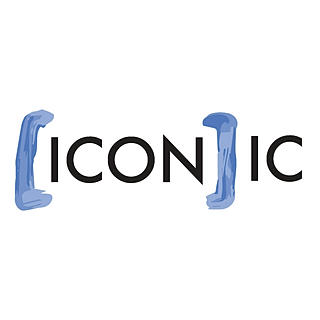Creating a Great Project Brief For Your Graphic Designer.
- iconicdesignau
- Nov 19, 2018
- 3 min read
So you’re taking the leap and hiring a graphic designer to help build a killer brand for your business that will make it stand out from the crowd and get people excited (congratulations!). But how do you make sure you’re getting the best out of your designer and their time?!
Despite what myth and legend might tell you, we graphic designers are no magic 8 ball; just shake us and we have your branding answer ready to go.. Creating and designing anything takes information, research and inspiration, and there are some things you as a client and a business owner should consider before your designer gets to work so they have the tools to pull all those ideas from your head and give them life on the screen and page!

In the design world we use a Creative Brief to gather and organise this information. A Creative Brief includes a series of titles or questions and answers aimed to provide as much information about you, your brand or product, your stylistic preferences, and the goals and needs involved. If you as a client want to make sure you’re prepared and know exactly what your designer will be looking for before ever putting the pencil to paper we’ve compiled some common questions and the most thorough and helpful answers to them!
Brief Introduction & History
Give a short paragraph that describes your business! We want to know your history; who you are, where you came from, where you’re going and what you’re about. If you’re after a package design, add another paragraph about the product, how it relates or differs from your previous products, what makes it stand apart etc.
Target Audience
Outline who your brand or product is targeted at! Consider things like age, gender, income, lifestyle, location, morals, hobbies etc. The more you and your designer know about your intended clientele the better, as this will have a huge impact on the approach to style and design that will best suit your purpose!

Competitors
Identifying those you will be competing with directly is important in making decisions that will help you stand out! Providing names and links to their pages or handles if they have them is incredibly helpful for your designer to make sure they’re able to find the right information and quickly.
Look & Feel
What feelings or ideas do you want your brand to communicate? What aesthtic are you looking for? What things are important about your brand that you want represented? Are there any ideas or images you’ve had already that you think would work and why? Or, if there are specific things you have already decided you want in your brand (say you want a leaf included, or just the initials for the logo for example) make sure to mention it.
Examples Of Design You Like
Take some time to look around at other brands and save and send anything that grabs your eye. They don’t neccessarily need to be in the same industry, but focus more on the mood or styles that you like and think would suit your brand.
If there’s anything you particularly don’t like, include these too! This is a great and simple way to give your designer a clear look into your stylistic preferences.

Needs
What exactly do you need out of the finished project? This is the time to list what you need your graphic designer to create for you.
For logos specifically, make sure you specify where you intend to have it appear (even if it’s vastly in the future); business card, facebook icons, email signature, outdoor signage, t-shirts and uniform etc, as this will effect how many you need and what sizes and formats you need them in.
If you’re intending to print the designs, specific sizes and file types are handy to know as early on as possible as well.

Budget
If you have a specific budget make sure your designer is aware. This is especially for those wanting their designer to consider the cost of printing in their design choices, or cover the cost of printing within their quote; Gold embelishments may speak volumes for your brand in your designers head, but these things come with additional costs that may not suit your budget.
Time Frame
If you have a time you need the designs done by make sure you include it so your designer can appropriately plan and schedule for your job. It’s polite in general, but it also means you’re designer is able to allocate appropriate time and give your brand the thought and care it deserves.




Comments